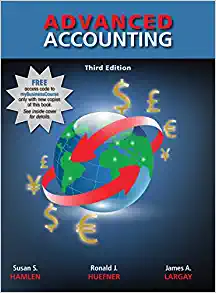Question
1. Question 1 The performance forecasts based on managerial accounting data compared to those based on financial accounting data are expected to be Depends on
1.
Question 1
The performance forecasts based on managerial accounting data compared to those based on financial accounting data are expected to be
Depends on the objective
More reliable
Of the same quality
Less reliable
2.
Question 2
While making decisions based on managerial accounting data, the manager should:
Keep collecting information until it's complete and comprehensive
Make the decision based on intuition
Postpone the decision until all important information arrives
None of the above
3.
Question 3
Last November, Healthy Sandwiches made 2,500 sandwiches and served 4,500 cups of coffee. It paid $675 for electricity. Last December it made 3,000 sandwiches and served 5,400 cups of coffee. The December electricity bill showed $700. What is the estimated monthly fixed cost of electricity?
$600
$550
$575
Can't say
5.
Question 5
Suppose we apply a CVP analysis. If the selling price per unit doubles while the variable cost per unit stays the same, the new break-even point (in units produced) will be:
Less than half of the initial break-even point
Can't say without additional information
Equal to half of the initial break-even point
More than half of the initial break-even point
6.
Question 6
Suppose we apply a CVP analysis. If the variable cost per unit doubles while the selling price per unit stays the same, the new break-even point (in units produced) will be:
Can't say without additional information
More than twice the initial break-even point
Less than twice the initial break-even point
Equal to twice the initial break-even point
7.
Question 7
When a company refines its cost allocation system, the following remain unchanged:
Total costs
Total direct costs
Total indirect costs
All of the above
10.
Question 10
In terms of Question 9, suppose that product Q requires 50% more direct labor from Department A, and twice as much as P from department C. Department B does not participate in the production of Q. How much overhead is allocated to the product Q?
$78,000
$69,000
$84,000
$75,000
2.
Question 2
In terms of Question 1, what is the major indirect cost component for the described customer?
Accounting
Advertising
Customer service
Can't say
3.
Question 3
In terms of Question 1, suppose that NMK has been able to reduce its unit cost of a call by 15% and the advertising costs by 10%. By how much would the indirect cost of the mentioned customer decrease?
10.4%
10.0%
10.8%
10.2%
4.
Question 4
Which of the following costs are not relevant in a make-or-buy decision:
Variable costs of producing the item
Costs that are avoidable by buying rather than making
The opportunity cost of freed space
Depreciation of the equipment
5.
Question 5
T UV Company makes many products including Product P that has a contribution margin of $35,000. Fixed costs total $100,000. If Product P is dropped, $80,000 of fixed costs will stay unchanged. Dropping Product P will lead to the following change in TUV operating income:
A decrease by $15,000
An increase by $20,000
An increase by $15,000
A decrease by $35,000
7.
Question 7
In terms of Question 6, if only two thirds of fixed costs could be avoided, the operating income would:
Decrease by $7,500
Not change
Increase by $1,500
Decrease by $1,500
8.
Question 8
Product P has a contribution margin of $9 per unit, a contribution margin ratio of 40%, and requires 3 machine-hours to produce. Product Q has a contribution margin of $15 per unit, a contribution margin ratio of 30%, and requires 5 machine-hours to produce. If the constraint is machine-hours, the company should manufacture:
Product P since it has the highest contribution margin ratio
Product P since it requires fewer machine-hours than does Product Q
Product Q since it has the highest contribution margin per unit
The company is indifferent between products P and Q
Step by Step Solution
There are 3 Steps involved in it
Step: 1

Get Instant Access to Expert-Tailored Solutions
See step-by-step solutions with expert insights and AI powered tools for academic success
Step: 2

Step: 3

Ace Your Homework with AI
Get the answers you need in no time with our AI-driven, step-by-step assistance
Get Started


